The following examples are intended to help Itasca software users to become familiar with their software, particularly first-time users. However, intermediate and advanced examples are also provided to demonstrate suggested workflow and the tools available. Users are expected to have a general understanding of mechanics and geotechnical engineering. These examples are intended to demonstrate the various classes of problems to which Itasca software may be applied and should not be used for engineering design work.
For more examples and verification problems, please refer to the manuals provided with your software. Itasca also offers training courses throughout the year as well as paid customized training courses either at your organization or one of our offices.
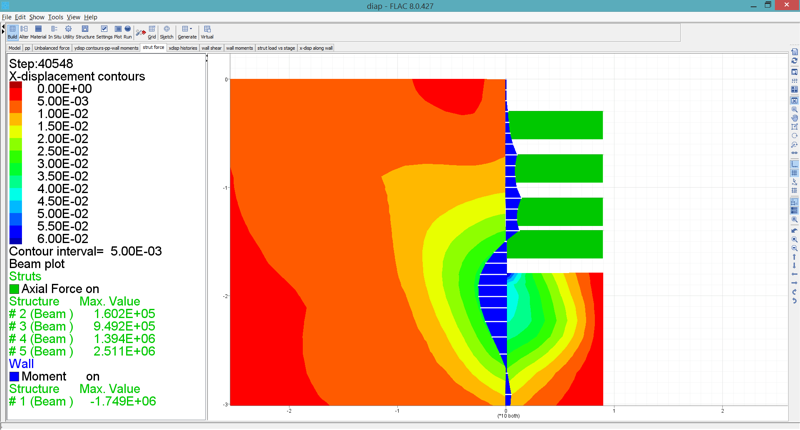
Analysis of a Concrete Diaphragm Wall
The stages of construction of a concrete diaphragm wall are simulated with FLAC. The analysis begins with the concrete diaphragm wall cast in place. Dewatering, excavation and installation of support struts are simulated in five excavation stages. Distribution of shear forces and bending moments in the wall, axial forces in the struts and displacements of the soil behind the wall are calculated during the five stages.
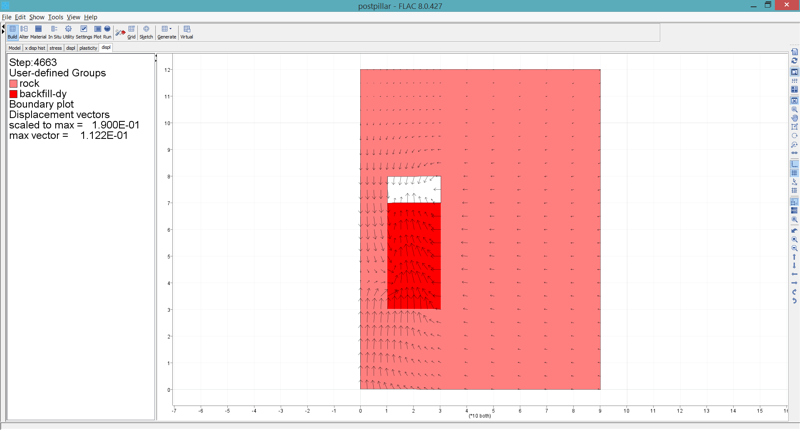
Axisymmetric Modeling of Post Pillar Mining
Post pillars are created when mechanized cut-and-fill stopes are mined on all sides. A FLAC model studies the potential instability of the pillars. Axisymmetric geometry in FLAC provides a reasonable representation of the three-dimensional condition.
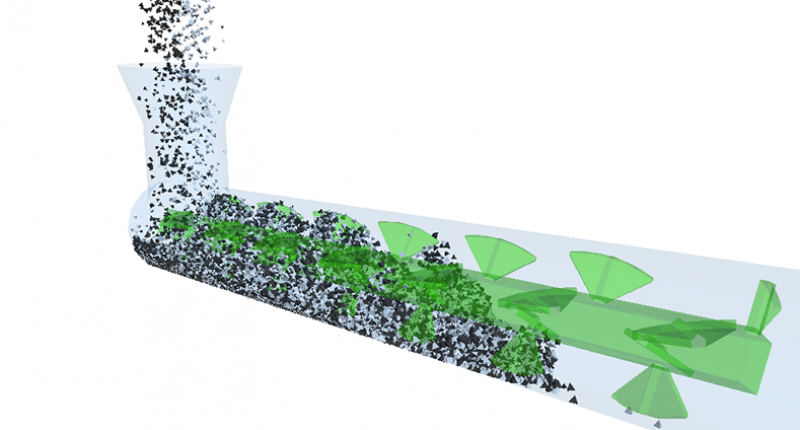
Binary Mixer
In the pharmaceutical industry, the overall performance of a continuous, binary powder mixer is measured by how well components are mixed, limitations of the recirculating regions, how much shear is experienced by particles, and how little product must be discarded at startup before a reliable steady-state mixture is achieved.
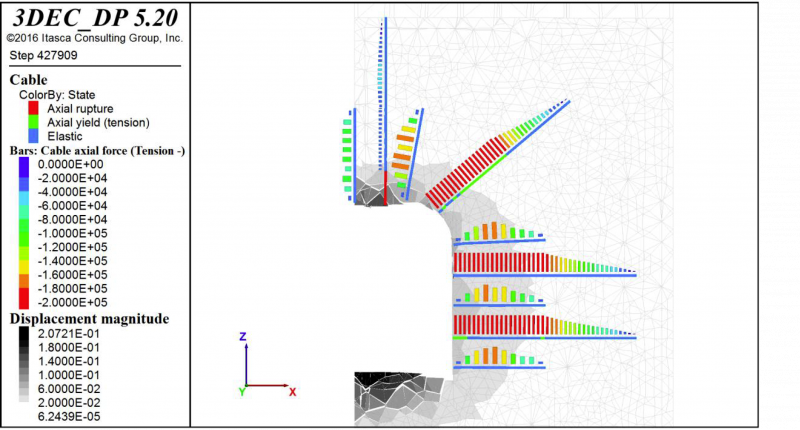
Bonded Block Model of Tunnel with Support
This example describes the excavation of a tunnel modeled by an assembly of bonded tetrahedral blocks. Cable support is also simulated.

Cemented Backfill Pillar Performance
The failure mode of cemented backfill pillars is studied with FLAC. A sliding interface is used to represent the orebody-sandfill contact to allow downward settling of sand during collapse. The model is run in large-strain mode to illustrate the active collapse of the pillar.
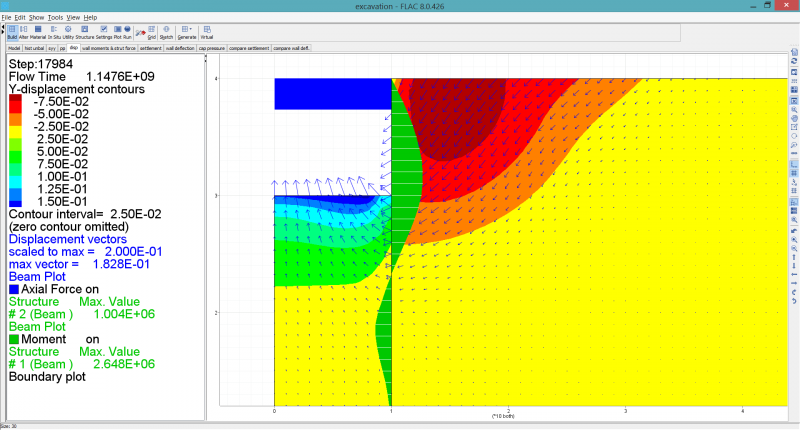
Dewatered Construction of a Braced Excavation
A braced excavation is constructed in saturated ground. The construction stages, dewatering, excavation and braced support construction are simulated with FLAC.
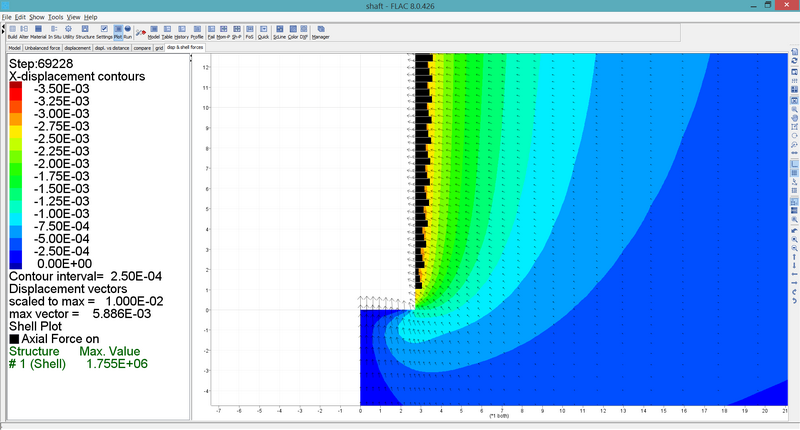
Displacements near the Face of an Advancing Shaft
FLAC simulates the excavation and installation of lining support for an advancing monolithic precast concrete shaft. The simulation is performed using the axisymmetric geometry configuration in FLAC.
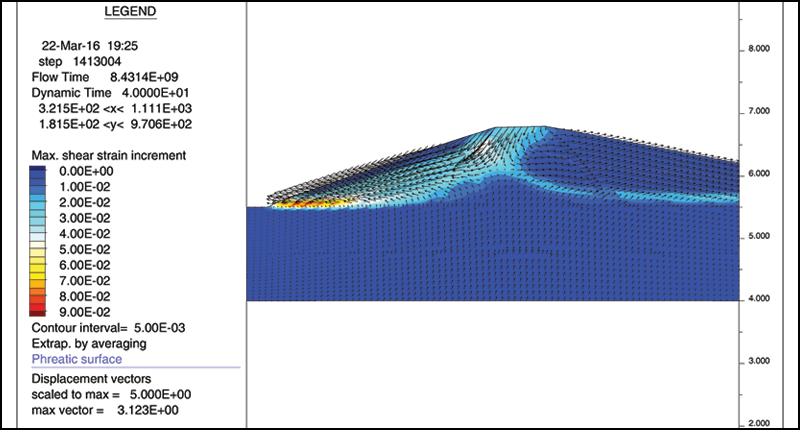
Earth Dam
This example presents a FLAC model that demonstrates a recommended procedure to simulate seismic loading of an embankment dam.
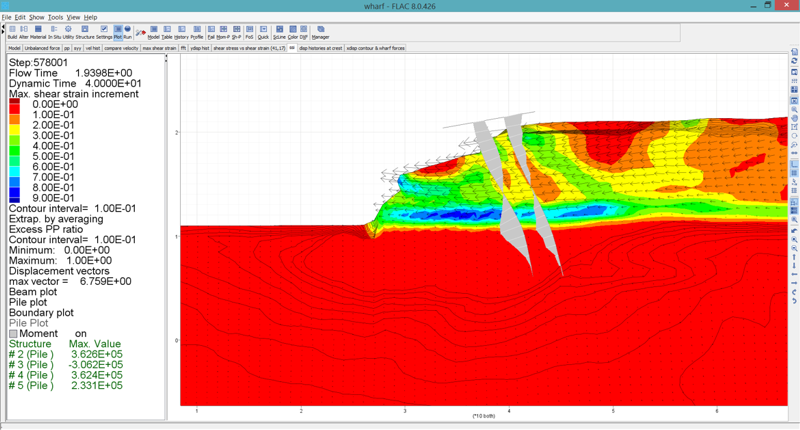
Earthquake Loading of a Pile-Supported Wharf
A seismic hazard concern in the design of pile-supported wharves at port waterfronts is the structural stability of the wharf if earthquake induced liquefaction occurs in the soils supporting the piles. Calculations can be made with FLAC for both the deformation of the liquefiable soils and the displacements and loading of the wharf structure that are induced by the earthquake motion.
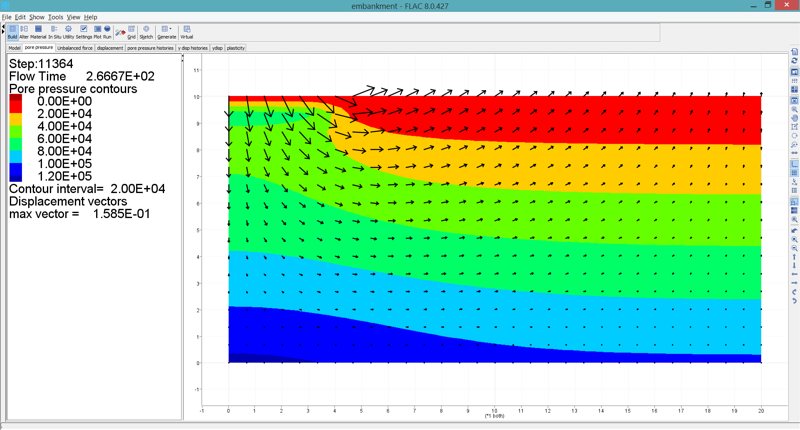
Embankment Loading on a Cam-Clay Foundation
The response of a saturated soil foundation to an embankment load is studied with FLAC. The soil behavior is represented by a Cam-clay material model. The pore pressure build up and dissipation in the foundation soil and the settlement beneath the embankment are calculated during undrained and drained loading. This is a fully coupled mechanical-fluid flow calculation.
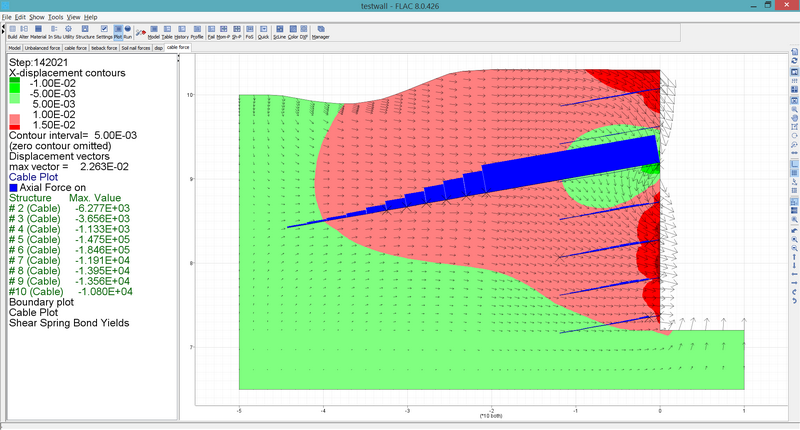
Full-Scale Test Wall in Sand
The simulation of a test wall construction in well-graded sand is performed with FLAC. The construction steps include eight excavation stages with shotcrete, tiebacks and soil nails emplaced as support at each stage. The tiebacks are pretensioned to a specific lockoff load. Development of forces in the support and soil deformation are monitored throughout the construction process.
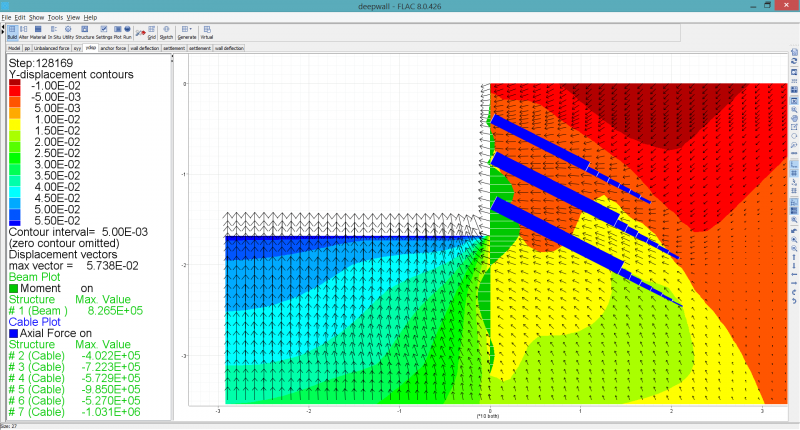
Installation of a Triple-Anchored Excavation Wall in Sand
A deep excavation in Berlin sand is a benchmark problem for the Cysoil and PH (plastic hardening) soil models in FLAC. The simulation follows the construction sequence: install diaphragm wall, dewater, excavate in four stages and install pre-tensioned anchors at each stage.
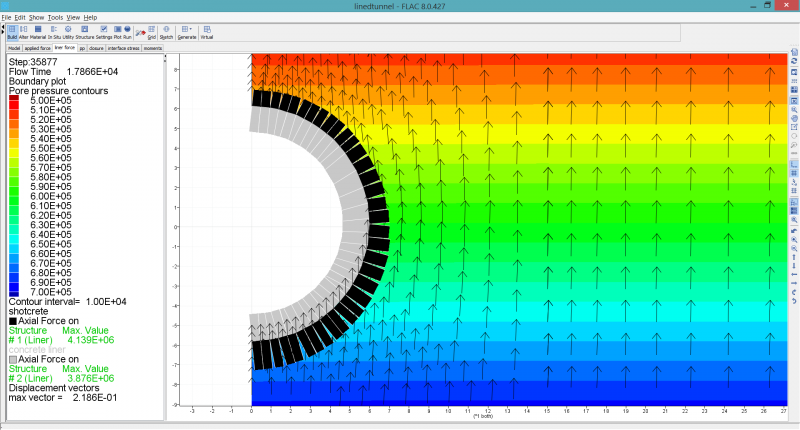
Lined Tunnel Construction in Saturated Ground
A circular lined tunnel is constructed in saturated ground. The ground is dewatered during construction. The tunnel is supported by a temporary shotcrete liner, which is installed while the tunnel excavation is advanced.
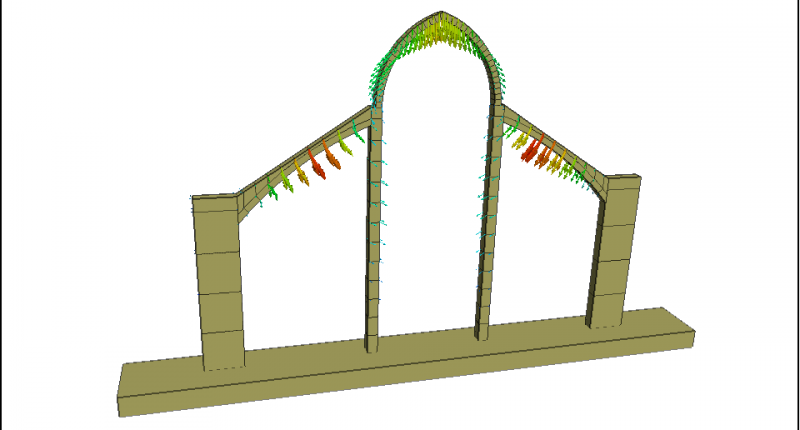
Modeling of flying buttresses with rigid blocks
The effectiveness of flying buttresses in a supporting a thin-walled arch is investigated with a 3DEC model. The structure is simulated as a collection of rigid blocks and the deformation under gravity loading is observed. The model is run with and without buttresses to examine their effect.
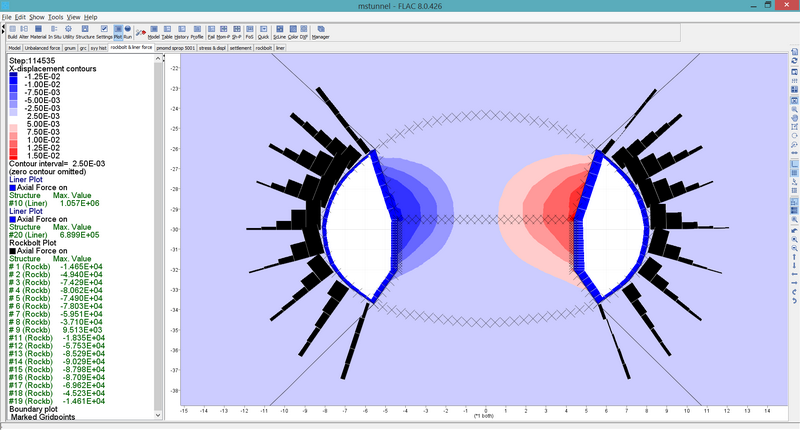
Multistage Tunnel Excavation and Support
FLAC simulates the four excavation stages and three construction steps within each stage for a multistage tunnel excavation and construction. The convergence-confinement method is used to simulate the effect of the tunnel advance.
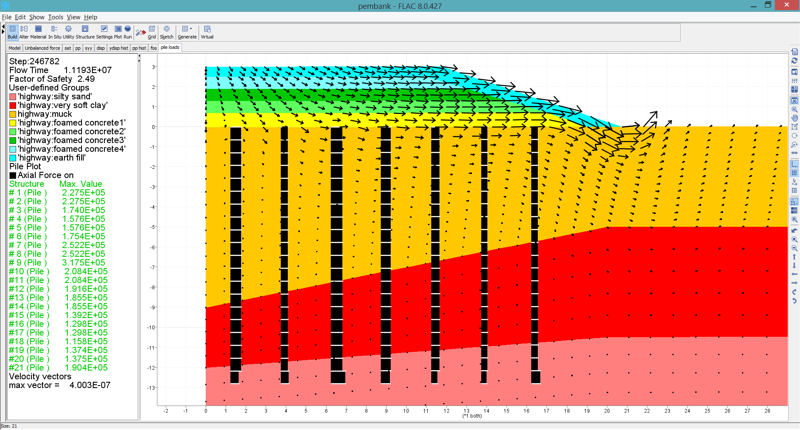
Pile-Supported Highway Embankment
End-bearing piles are used to support highway embankments constructed over soft foundation soils. A FLAC analysis is performed for the initial, undrained construction stage of a highway embankment over a soft saturated foundation.
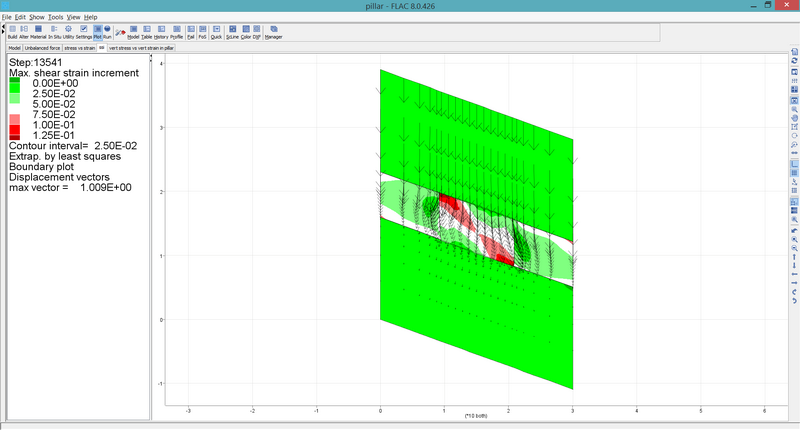
Post-Peak Pillar Behavior and the Effects of Backfill Confinement
FLAC is applied to study the behavior of progressively collapsing pillars. The effect of backfill confinement is evaluated by comparing different scenarios: no backfill, tight backfill and backfill with a 10 cm gap between the backfill and the roof.
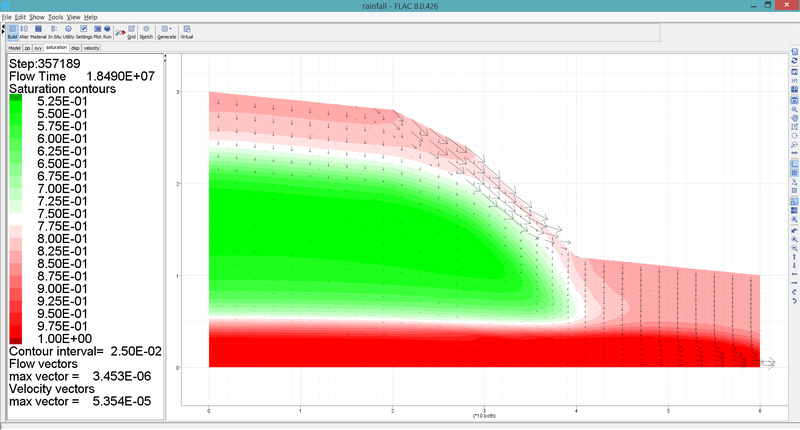
Rainfall on a Slope
The stability of a slope subjected to rainfall events of increasing intensity and decreasing duration is analyzed with FLAC. The apparent cohesion provided by capillary forces in unsaturated soil is simulated using the two-phase fluid flow logic.

Rock Slide
This example demonstrates the use of PFC to model a pile of rock boulders sliding down a slope. The slope is represented by a DXF surface that is imported into PFC and automatically converted to wall facets.
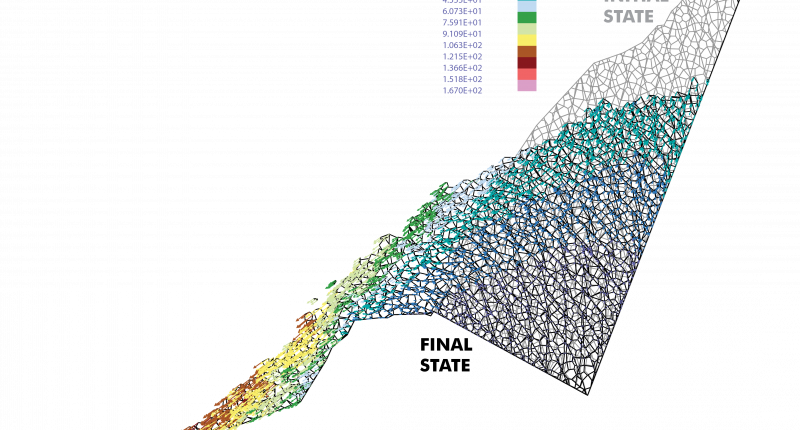
Rockslide runout prediction
This example presents a UDEC analysis of the Checkerboard Creek Rock Slope, British Columbia, Canada to assess potential rockslide run-out characteristics. A Voronoi tessellation scheme is used to create a rock fabric that allows the moving rock slope to disaggregate.
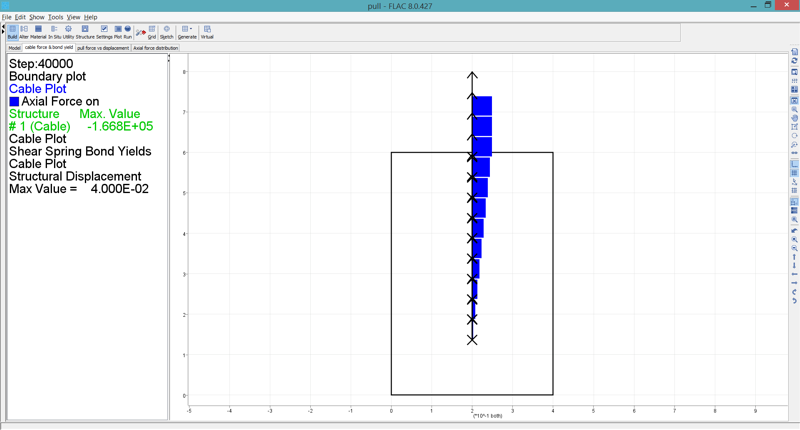
Simulation of Pull Tests for Grouted Cable Anchors
Pull-out tests on grouted cable bolt anchors are simulated with FLAC. Grout is represented as a cohesive and frictional material with confining stress dependence. Results are presented as axial force–deflection curves.

Simulation of Pull Tests for Grouted Cable Anchors
Pull-out tests on grouted cable bolt anchors are simulated with FLAC. Grout is represented as a cohesive and frictional material with confining stress dependence. Results are presented as axial force–deflection curves.
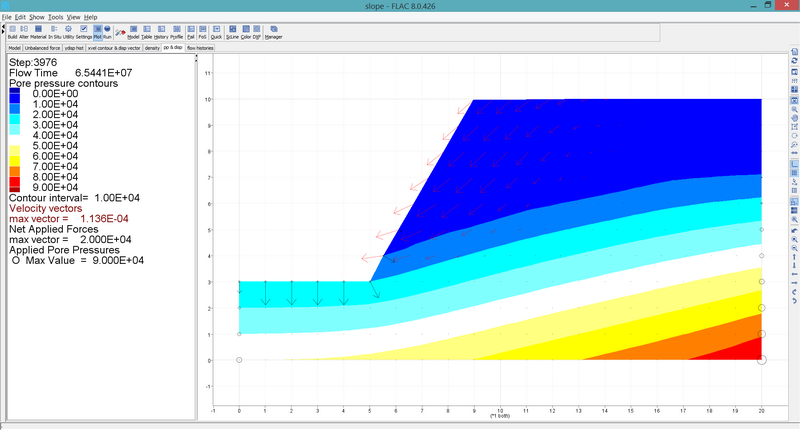
Slope Stability for a Cohesive and Frictional Soil
Three slope stability problems are studied with FLAC. First, a slope in sand with zero cohesion is modeled. Then, a small cohesion is added to the material and stability is reexamined.
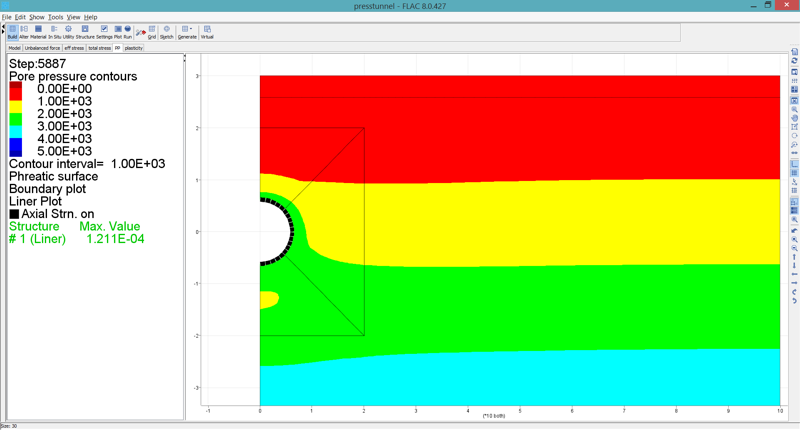
Stresses Around a Pressurized Concrete Tunnel
Stress relaxation in rock after excavation of a circular water tunnel and installation of a liner is examined with FLAC. The liner is installed and pressurized instantaneously to permit the stress field to respond to radial strain in the liner.

Swelling of a Fully Wetted Slope
Swelling deformations of a fully wetted slope are calculated in FLAC using the swell constitutive model. Wetting is simulated by activating the swell model.
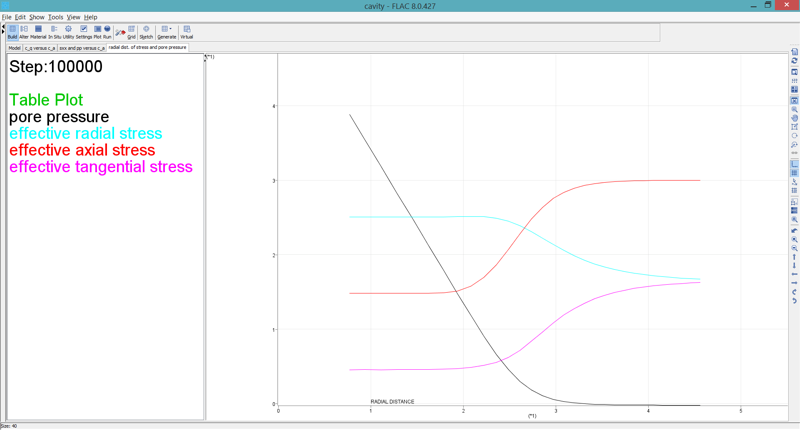
Undrained Cavity Expansion in a Cam-Clay Medium
The stress and pore pressure changes due to expansion of a pressuremeter in a saturated clay are analyzed with FLAC. The pressuremeter is simulated with the axisymmetric geometry configuration, and the clay is represented by the Cam-clay material model.
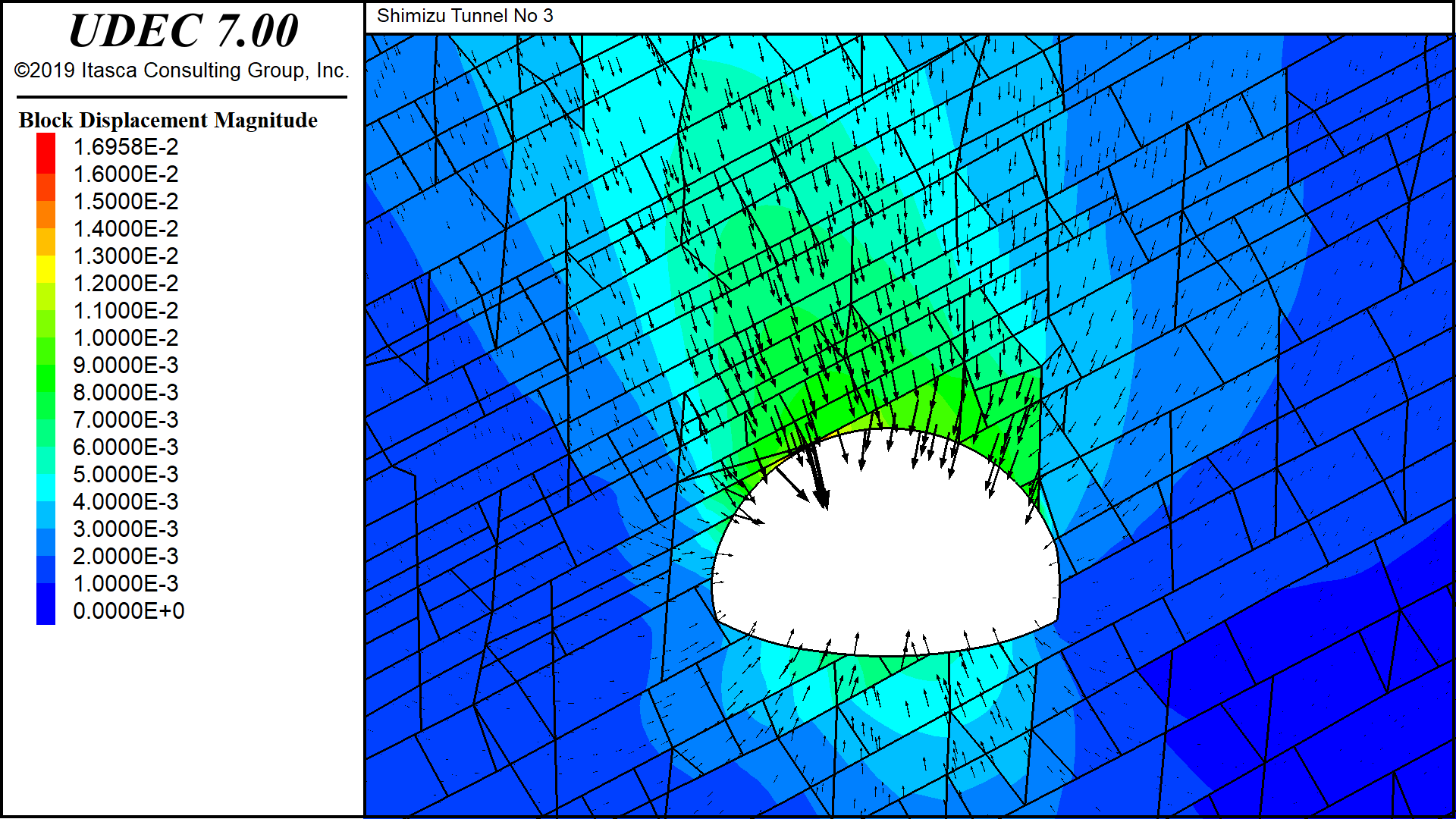
Example of Shimizu Tunnel No 3 in UDEC 7.00
This example demonstrates the use of UDEC to model a tunnel excavation in a jointed rock mass.
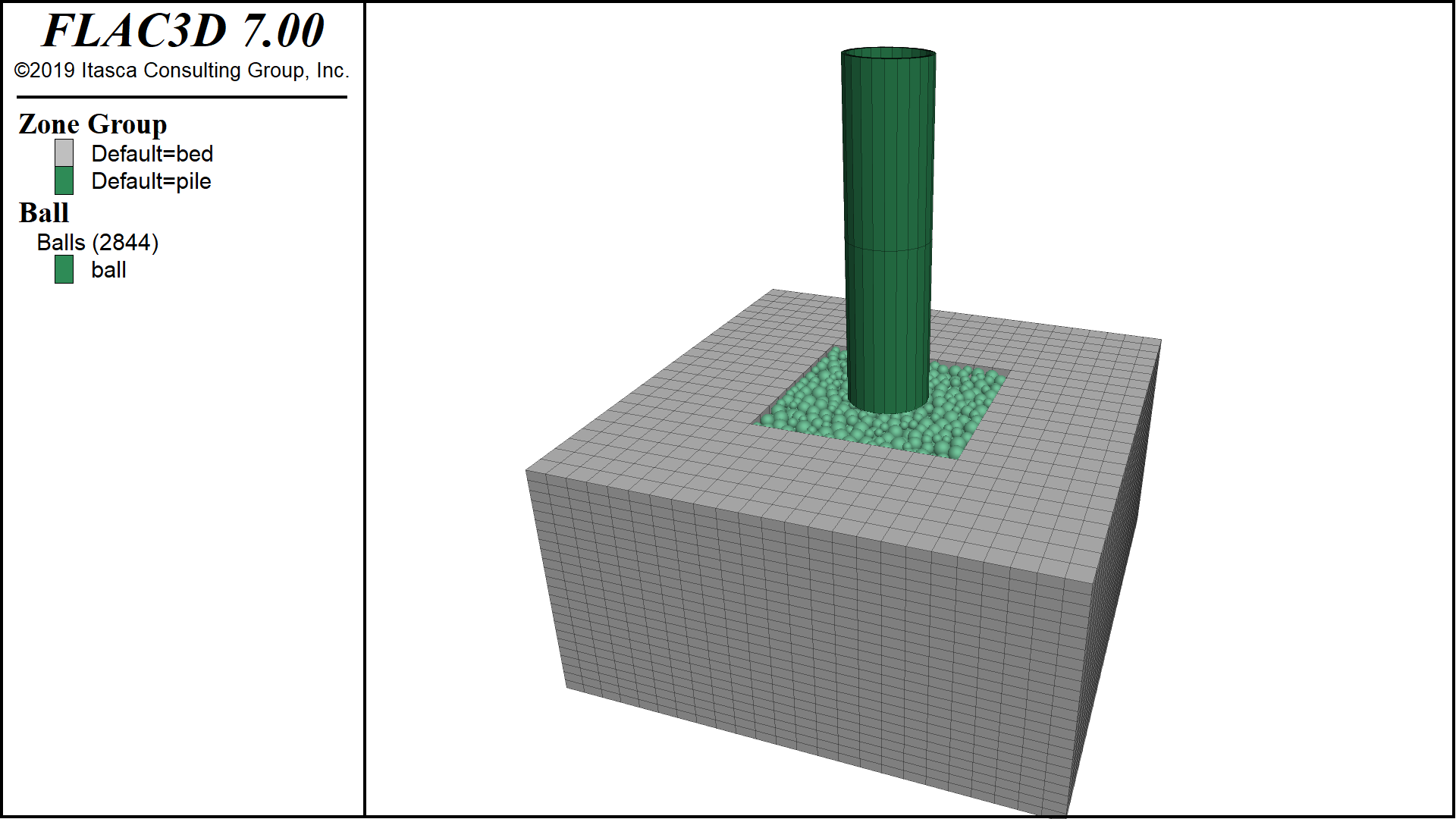
Coupled pile simulation with PFC and FLAC3D
A simple pile with a hollow setup is shown in this example, which is typically used for the foundation setup of offshore wind energy turbines. During the simulation, the pile will intrude into the soil ground material, which is generated of PFC particles
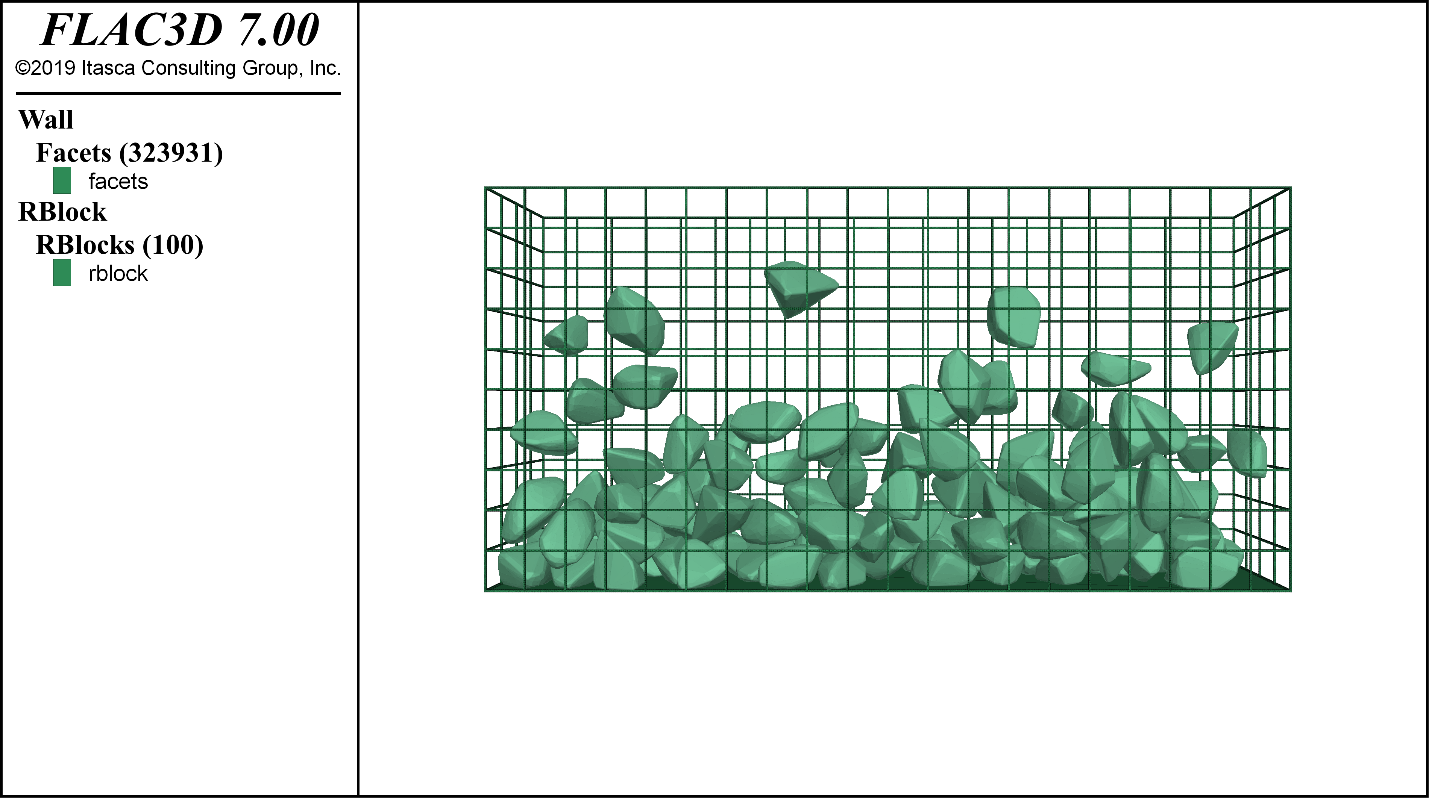
Example of Gabion Calculation in FLAC3D 7.00
Simulation of a wire gabion is performed in FLAC3D coupled with PFC.
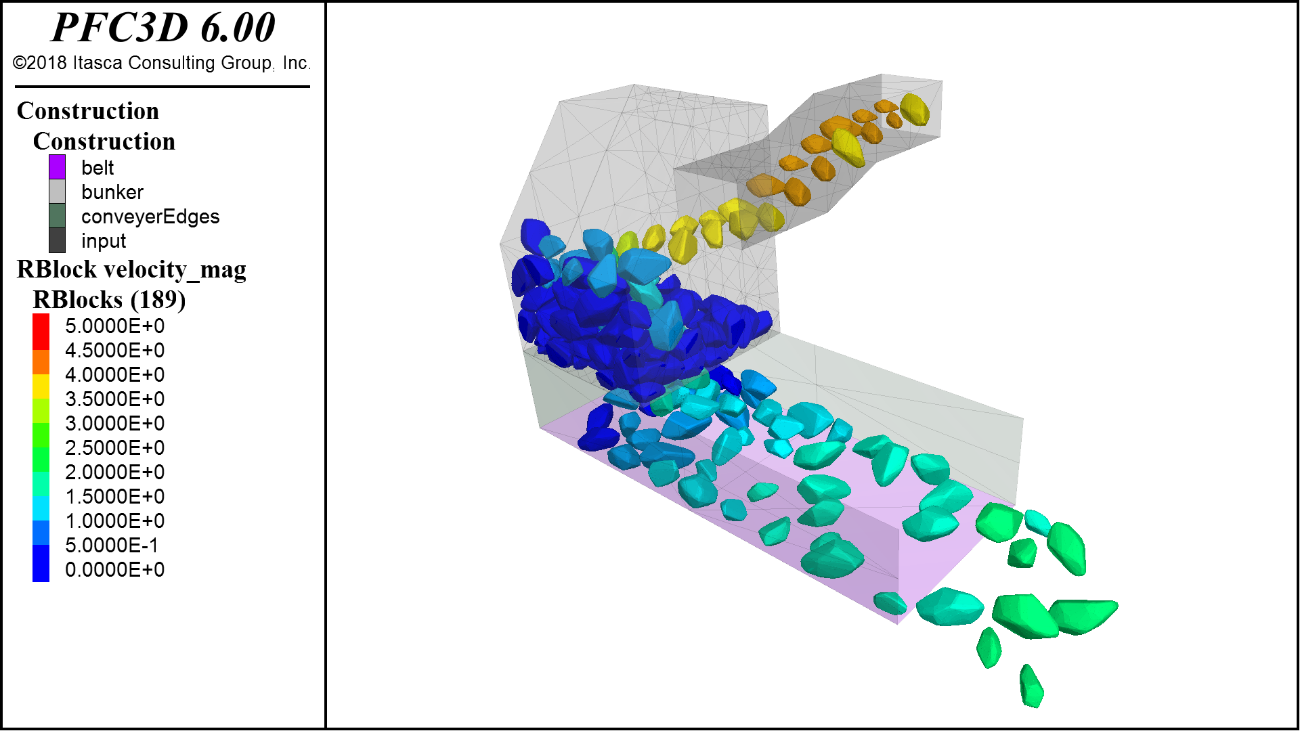
Example of Conveyer Walls in PFC 6.0
This example demonstrates the use of PFC to model conveyer systems, which are often used in the pharmaceutical, chemical, materials processing, and agricultural engineering industries
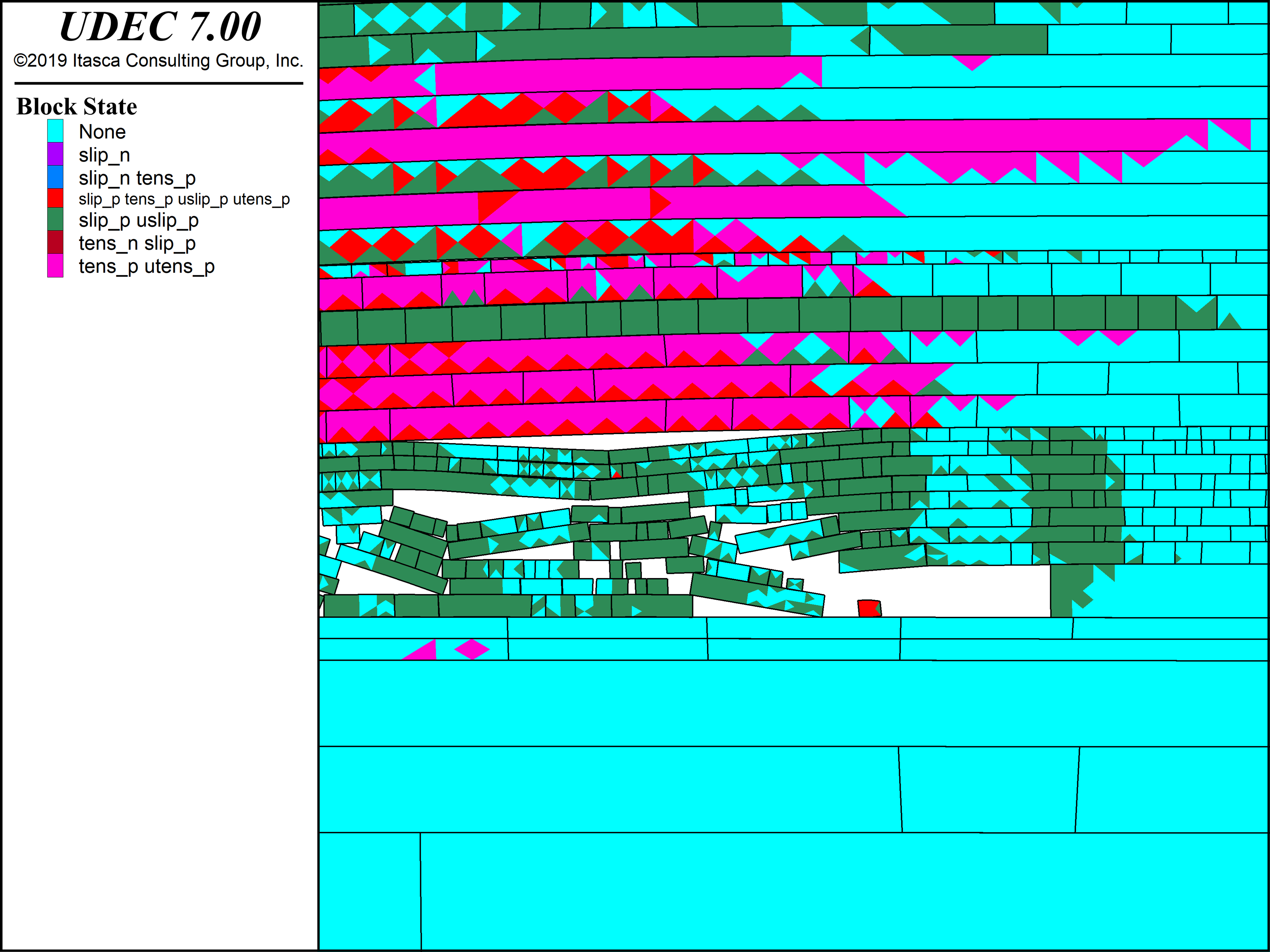
2D Discontinuum Model of Longwall Collapse
The complex process of roof collapse behind an advancing longwall coal face is investigated by setting up a two-dimensional stratified UDEC model.
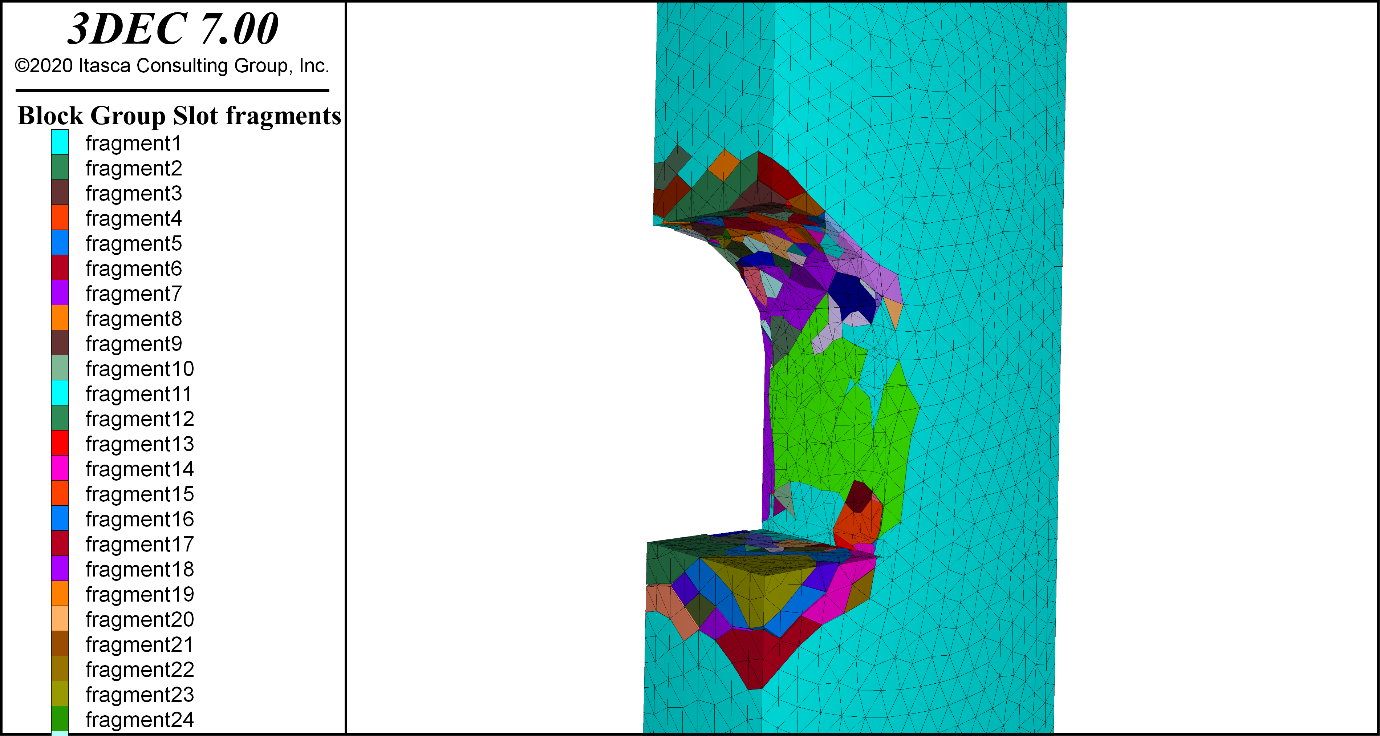
Bonded Block Model (BBM) of Tunnel with Support (3DEC 7)
This example describes the excavation of a tunnel modeled by an assembly of bonded tetrahedral blocks in 3DEC version 7. Hybrid bolt support is also simulated

Dynamic Modeling of Parthenon Pronaos
The model simulates the SE corner of the Parthenon subjected to earthquake loading.
